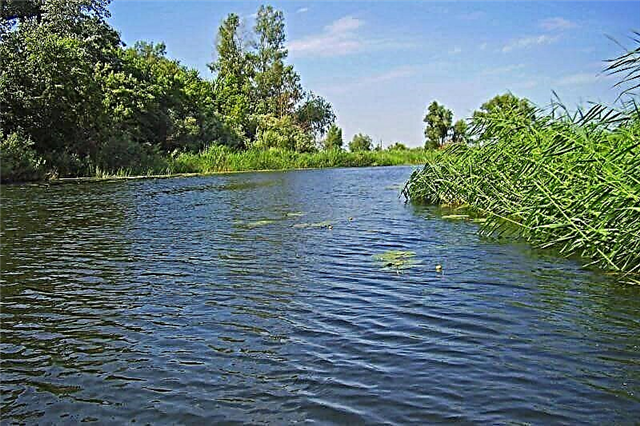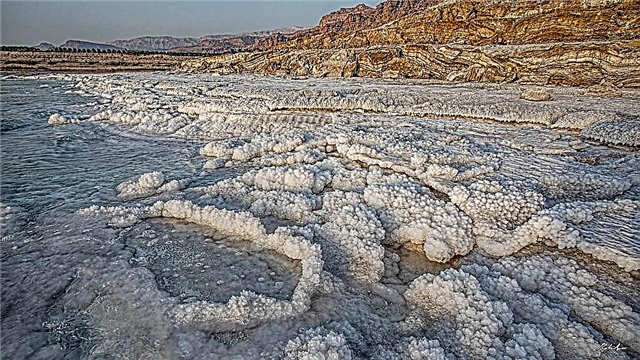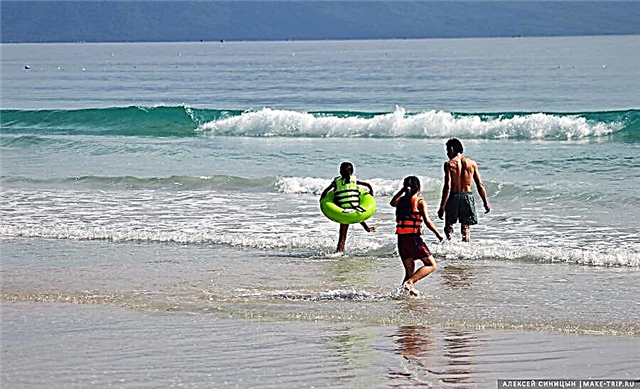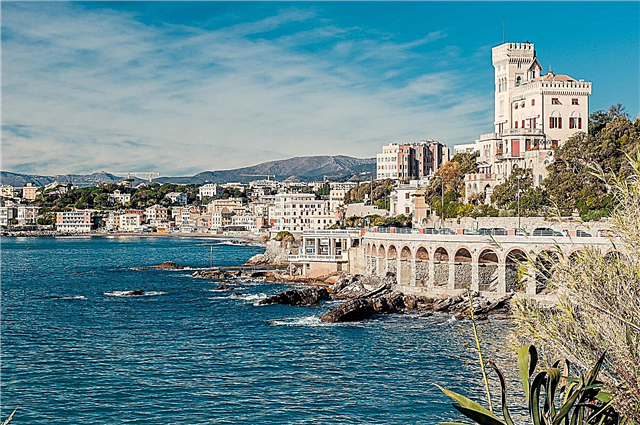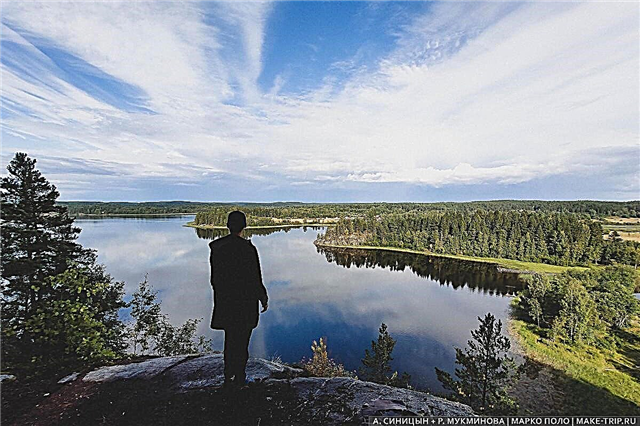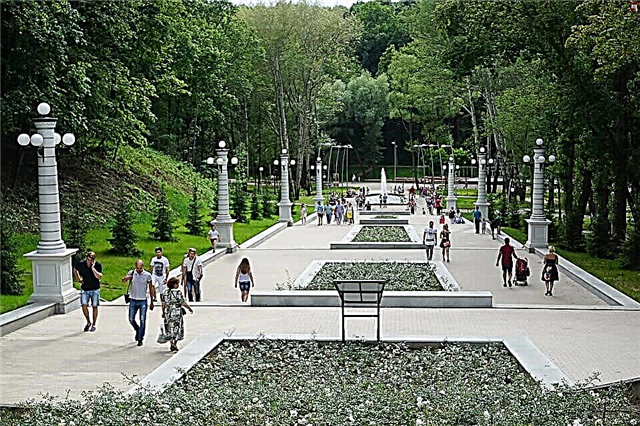Voronezh Region is located in the center of the Russian Black Earth Region. The nature of these places can surprise any traveler with a variety of forms and landscapes: coniferous and deciduous forests, chalk mountains and hills, many reservoirs and even a section of a real desert. Among them there are absolutely unique places that have preserved the purity and diversity of flora and fauna, which have scientific value.
The region has hiking trails for history buffs, scenic landscapes and outdoor activities. There are more than 150 natural monuments on its territory. Most of them are complex, since, as a rule, the unique species composition of flora and fauna is preserved in unique territories. Vivid examples are the Divnogorye Museum-Reserve and the Belogorye tract, which, in addition to rare nature, contain important historical sites.
Interesting natural monuments of the region
List of natural monuments of the region that are worth seeing!
Voronezh Central Park
In the center of Voronezh there is a place beloved by all townspeople. The 100 hectare pack zone has more than 170 years of history. It was founded as a botanical garden by order of Nicholas II. In our time, a complete landscape reconstruction has been carried out. Here you can visit the war memorial and open-air theater, sports and playgrounds. There is a pond and a fountain. Cultural events are held in the park.

Tract "Krivoborye"
An amazing place is located 40 km from Voronezh. The Don River here makes a 180-degree turn, and the sandy bank has a height of 60 meters and an angle of about 70-80 degrees. The top of the slope offers breathtaking views of the calm flow of the great river, the clean sandy beach and the surrounding forests. The tract is one of the geological natural monuments, has scientific interest for studying the history of the region.

Don't miss: TOP 20 nature reserves in the Voronezh region.
Petrovsky square
The history of the Voronezh land is closely connected with the name of Peter I, who actively developed shipbuilding here. A bronze monument was erected in his honor in one of the city squares in 1860. During the war, it was taken out by German invaders; the modern version of the monument was recreated from photographs in 1956. The park has more than 10 species of rare exotic trees. One of the most famous is the Tree of Love. The newlyweds tie ribbons on him and make wishes.

Koltsovsky square
The square got its name in 1868, when a white marble monument to the poet was erected here. Due to rare plant species, the composition of which is constantly replenished, it has the status of a dendrological natural monument. The square is fully landscaped, since Soviet times, the country's first color and music fountain, a famous landmark of the city, has been operating here. Open concerts are held here in summer.

Big and Small Divas
This place is also known as "Divnogorie", it resembles fabulous lost places. Divas are called chalk outliers that rise on the steppe plateau in the valley of the Sosna River. There used to be more than twenty of them, but only six have survived to this day. Big Divy is a cave carved into a large outlier. An ancient temple was built in it. Malye Diva is a church built in a smaller outlier.

Read about all the best tourist places in the region: the main attractions of the Voronezh region.
Tract "Belogorye"
The right bank of the Don near the village of Belogorye is covered with chalk formations, so it looks more like white rocks. The slope is high, precipitous, inhabited by rare insects and plants. A unique view opens up from the top. In one of the mountains in the 18th century, a complex cave was cut through, in its largest room a temple was built. Now the Resurrection Monastery operates here - a place of pilgrimage for Orthodox believers.

Botanical Garden of Voronezh State University
One of the largest natural monuments in Voronezh was founded in 1937 by VSU professor Boris Mikhailovich Kozo-Polyansky. The garden is named after a famous botanist. A lot of scientific work is being carried out here to identify and preserve valuable plant species, new varieties are being developed. The dendrological collection includes more than 700 species from all over the world, as well as more than 1000 species of herbaceous plants. The Botanical Garden can be visited with a guided tour.

Arboretum VGAU
The Agrarian University is the first Voronezh university. It bears the name of Peter I, who laid the foundation for agricultural research in the province. The building in the style of Peter the Great Baroque is located in a green park area. The arboretum was declared a natural monument in 1969. More than 150 species of plants, brought from different parts of the world, grow here. The area of the park is 11.9 hectares.

Arboretum VGLTA
The park covers an area of 4.2 hectares and is an extensive collection of deciduous and coniferous trees, many shrubs. These plants are of scientific value for afforestation and gardening, and are necessary for practical research conducted at the Forestry Academy. In addition, it is just nice to walk along the wide alleys here, you can feed the squirrels. Sports competitions are often held in the park.

Lake Pogonovo
The Big Lake is located in the Don floodplain, near the village of Rudkino, 20 km from Voronezh. It has an elongated shape, reminiscent of the outlines of Baikal. The length is about 4 km. The water is very clean and transparent, which confirms the presence of a large number of fish in the lake. The banks, overgrown with reeds, are swampy in places. The lake is surrounded by meadows and forest, with many animals and rare plants. An ancient man's site was discovered on the banks.

Bald mountain
In the north of Voronezh there is a sanatorium named after A.M. Gorky. The place for it was not chosen by chance: the Voronezh reservoir, clean deciduous forests and beautiful landscapes. The main attraction is Lysaya Gora, which is a steep coast with a height of about 60 meters. In the geological outcrop, layers of ancient rocks can be traced. Also, archaeological sites of the early Middle Ages were discovered near Lysaya Gora.

Mayatskoe settlement
In the Liskinsky district, the Tikhaya Sosna river flows into the Don. At the mouth there is a high promontory on which a medieval settlement was found. This territory is part of the Divnogorie Museum-Reserve. In the settlement there is a white-stone fortress, a settlement, pottery workshops and a burial ground. About 6.5 hectares of the area around the archaeological site are a landscape natural monument.

Hemp mountain
The mountain is located in the vicinity of the town of Kalach. On one of its slopes there is an entrance to an underground labyrinth, presumably dug in the XIV century. Remains of two ancient temples have been preserved inside. Also on this territory there is an old merchant house and the Resurrection Church. Currently, a lot of work is underway to improve the Penkovo Mountain: there will be a park, viewing platforms, attractions.

Turtle Lake
A small lake in the Novousmanskiy district got its name by right: it is home to a large population of marsh turtle, the only one in the north of the region. The reservoir is deep enough, surrounded by a forest, the most shady northeastern coast turns into a swamp. Nearby is the village of Maklok, lost in the forest, visiting it, you can see 300-year-old oaks and taste the water from the Maklok spring.

Thorn barrow
In the Bobrovsky district, near the village of Yudanovka, there is the place where the Berezovka flows into the Ikorets river. On the meadow floodplain, in the form of an arrow, there is a high chalk hill formed by the forces of water and wind. It is washed away from both sides by the waters of these rivers.Height - about 27 meters, from a distance the outline of the hill looks like a pyramid. It is of scientific interest as a geological object. Up to 400 plant species can be found on its slopes.

Chernyshova gora
Legends about a robber's treasure hidden in a cave are associated with this mountain. It is located in the Semiluksky district, near the village of Gubarevo, on the right bank of the Don. Covered in a dense deciduous forest, where roe deer, foxes, hares, squirrels, wild boars, and wild strawberries grow. In addition, rare geological deposits and unique karst caves are of interest. Regular archaeological research is carried out here.

Usman river
The left tributary of the Voronezh River flows through the territory of the Voronezh State Reserve. The 104 km section of Usman is recognized as a natural monument, it starts from the border with the Lipetsk region. Most of the channel passes through dense forests, there are sections with beaches. The coastal area contains many rare plants. In the river, the water is quite clean, there are a lot of fish, lampreys listed in the Red Book are found.

Dune hillocks tract
An unusual place is located in the Petropavlovsk region near the village of Dedovka, almost 300 km from Voronezh. A large deserted area of over 197 hectares is also known as "Donskaya Sakhara". The sand dunes are surrounded by pine forests on all sides to stop the sand movement. Inside the mini-desert itself, there are also islands of forest. Due to this, the air is clean and filled with a coniferous aroma. The flora and fauna are unique to the region.

Lake Babier
The lake in the Anninsky district is located on the outskirts of the village of Babinka. More than 150 years ago, pelicans lived on the reservoir, they were popularly called "baba-bird", hence the name. Now swans come here to nest. Lake of volcanic origin, round in shape, lies in the middle of a treeless plain. It is often used by locals and visiting fishermen. Perch, roach, bream, rudd are caught.

Lake Krugloye
The lake is located in the north of Voronezh, in the outskirts of the Podgornoye microdistrict. It was declared a natural monument in 2018, following the recognition of an illegal attempt to drain it. Now this territory is under protection. The body of water is an important part of the ecosystem and is necessary to maintain water levels and fish spawning. It contains all the lake variety of fish, and rare carp is caught.

Spring Nizhny Kislyai
There are several springs in the village of Nizhniy Kislyai, Buturlinovsky District. The largest karst spring in the region, which gives rise to the Lower Kislyai River, deserves special attention. The source beats from the chalk mountain. Several years ago it was landscaped, the bowl was lined with stone. The water flow is very powerful, up to 250 cubic meters per second. The water is clean, transparent, and has healing properties.

Spring Kolodezhansky
A powerful spring gushes on the eastern outskirts of the village of Kolodezhnoe, Podgornensky district. It is the largest along the entire length of the Don in the Voronezh region, comes to the surface at the foot of the chalk mountain, and has a karst origin. The water is perfectly clean and mineralized. An old water mill has been preserved at the spring, it has been restored, further development is planned.

Cretaceous forest near the village of Nizhny Karabut
As you know, pine forests grow mainly on sandy soils. But 2 km from the village of Nizhniy Karabut, Podgornensky district, unique pines have been preserved. They grow on steep white chalk cliffs. This relict species is also of preglacial origin. In addition to the chalk pine listed in the Red Book, there are rare birds and an endangered species of tulips.

Unique 300 year old pine tree
The only pine tree among the vast oak forest grew on the slope of the Voronezh reservoir. Its age was estimated at 300 years, although pines live an average of 150 years. The tree was under protection, but in the winter of 2016-2017 it dried up. Scientists name natural causes. The height of the tree was 31 meters, and the trunk diameter was 0.96 meters.

Zaton Rich
The small old village of Kopanishte is located 12 km from the town of Liski. It is located in the bend of the Don. Here, a part of the river bed was separated, forming a floodplain lake called Bogaty Zaton. The shape of the reservoir is rectangular, in this regard, an assumption is made about its artificial origin. The shores are covered with calamus and cattail, there are water lilies, and there are many fish in the backwater.


